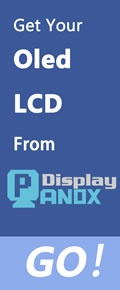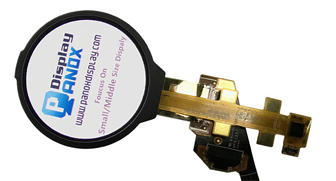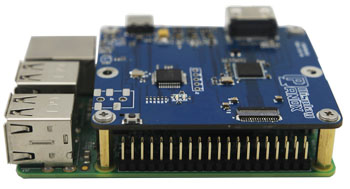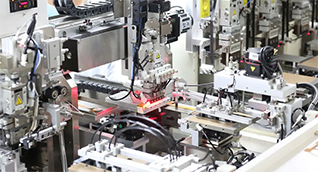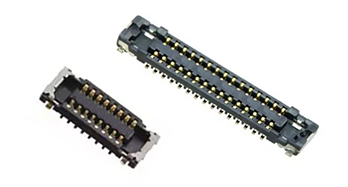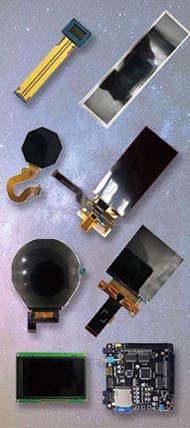A controller board in electrical systems acts as the device’s brain, processing input signals and managing outputs to regulate performance and safety. It controls components like motors, displays, and sensors, enabling precise operation in applications ranging from consumer electronics to industrial machinery. Also check: Flexible OLED
What Is an Electrical Controller Board?
An electrical controller board is a printed circuit board (PCB) designed to monitor inputs from sensors and control electrical components based on programmed logic. It processes data from devices such as temperature sensors or switches, then sends commands to actuators or displays to perform specific functions in the system. Many incorporate microcontrollers or programmable ICs to interpret sensor data and execute control tasks efficiently.
These boards ensure devices operate safely and efficiently by managing power distribution, regulating voltage levels, and often incorporating safety features like automatic shutdowns and fault detection.
How Does a Controller Board Process and Manage Input Signals?
Controller boards receive electrical signals from various inputs such as sensors, buttons, or remote controls. These inputs provide real-time data about device status or user commands. The board’s microcontroller interprets these signals using embedded firmware with logic calculations like "if-then-else" conditions.
This processing converts raw input into actionable commands, ensuring the device responds correctly to changing conditions — for example, adjusting motor speed or switching a relay. Accurate input processing is vital for precision control and system reliability.
What Types of Outputs Do Controller Boards Control?
Controller boards manage various output components including motors, displays, relays, LEDs, and solenoids. They send signals to:
-
Activate or adjust motor speed and direction
-
Control power relays switching electrical loads on or off
-
Update LCD or OLED displays with real-time data
-
Operate valves or dampers in HVAC systems
Output control depends on the board’s programming and connected hardware, enabling diverse applications from household appliances to complex industrial machinery.
Why Are Safety Features Important on Controller Boards?
Safety functions on controller boards protect the device and users by preventing damage caused by electrical faults. Common safety features include:
-
Overload and short-circuit protection
-
Overheating detection with automatic shutdown
-
Diagnostic LEDs or error indicators
-
Fail-safe routines that maintain system stability
These mechanisms enhance reliability, reduce downtime, and ensure compliance with safety regulations, which is critical in industrial and consumer products alike.
Which Industries Most Commonly Use Controller Boards?
Controller boards are essential in many fields, including:
-
HVAC (Heating, Ventilation, Air Conditioning): managing thermostats, fans, compressors
-
Consumer electronics: washing machines, ovens, smart home hubs
-
Automotive and electric vehicles: motor control, battery management
-
Industrial automation: PLCs controlling manufacturing lines
-
Display technology: LCD and OLED controller boards convert video signals
Panox Display, a leading global supplier, provides controller boards tailored for industries requiring high-quality, reliable display interface solutions.
How Do Controller Boards Enable Communication in Modern Devices?
Modern controller boards often include communication interfaces such as Bluetooth, Wi-Fi, UART, or CAN bus, allowing devices to exchange data with external systems. This capability enables remote control, monitoring, firmware updates, and integration into IoT ecosystems.
Communication features expand the applicability of controller boards in smart devices, enabling seamless interoperability across networks and platforms.
When Should Custom Controller Boards Be Considered?
Custom controller boards are ideal when standard solutions do not meet specific device requirements, such as:
-
Unique form factors or pin configurations needed for device integration
-
Advanced or proprietary communication protocols
-
Specialized control features or enhanced safety standards
-
Variable input/output configurations tailored to product specifications
Panox Display offers OEM manufacturing services for custom controller boards, helping startups and established businesses overcome typical high minimum order quantity hurdles with tailored, scalable solutions.
Where Are Controller Boards Manufactured and Sourced from?
Controller boards are manufactured globally, with major production hubs in China, Taiwan, and South Korea. Leading brands like Panox Display source premium components from top suppliers like AUO, BOE, Samsung, and LG, ensuring high-quality board assembly and performance.
Panox Display’s Shenzhen facility uses automated production lines capable of high-volume output, supporting efficient delivery with customizable testing and quality assurance.
Can Controller Boards Integrate with Display Solutions?
Yes, controller boards designed for display integration convert video input signals into formats compatible with LCD or OLED panels. They provide power regulation, touch panel control, backlight management, and data processing, ensuring clear and responsive screen performance.
Panox Display excels in supplying comprehensive display systems including controller boards, cover glass, and touch panels that guarantee seamless display integration and reliability.
Table: Common Controller Board Input and Output Examples
| Input Devices | Output Devices | Example Applications |
|---|---|---|
| Temperature sensors | Fan motors | HVAC systems |
| Buttons and switches | Relay switches | Household appliances |
| Remote controls | LED indicators | Smart home automation |
| Position sensors | LCD/OLED displays | Robotics and electric vehicles |
| Wireless modules (Wi-Fi, Bluetooth) | Solenoids and actuators | Industrial machinery |
Panox Display Expert Views
"Controller boards are the backbone of modern electronic systems, translating user commands and sensor data into precise control actions. At Panox Display, we prioritize customization and quality in our controller boards to meet the varied needs of industries from automotive to consumer electronics. Our integrated display solutions with reliable control systems empower engineers and product developers to deliver superior performance with streamlined integration. Experience the Panox advantage with innovative, cost-effective controller boards designed to enhance your product’s functionality and safety."
Conclusion
Controller boards form the critical control layer of modern electrical devices, converting sensor inputs into effective command signals that regulate motors, displays, and other components. They ensure safety, efficiency, and interoperability across countless applications. Choosing the right controller board, whether standard or custom-made by experts like Panox Display, is essential for product reliability and innovation.
Frequently Asked Questions
What components make up a controller board?
A controller board typically contains a microcontroller, power regulators, input and output connectors, and communication interfaces.
How does a controller board improve device safety?
It includes protection circuits like overload detection and automatic shutdown to prevent damage and hazards.
Can I use a controller board for multiple types of devices?
Yes, with proper programming and hardware compatibility, a single controller board can be adapted for varied applications.
Why choose Panox Display for controller boards?
Panox Display offers high-quality, customizable controller boards and display solutions backed by top-tier component sourcing and manufacturing facilities.
How do controller boards support industrial automation?
They control machinery operations based on sensor feedback and programmed logic, enabling precise and automated manufacturing processes.









